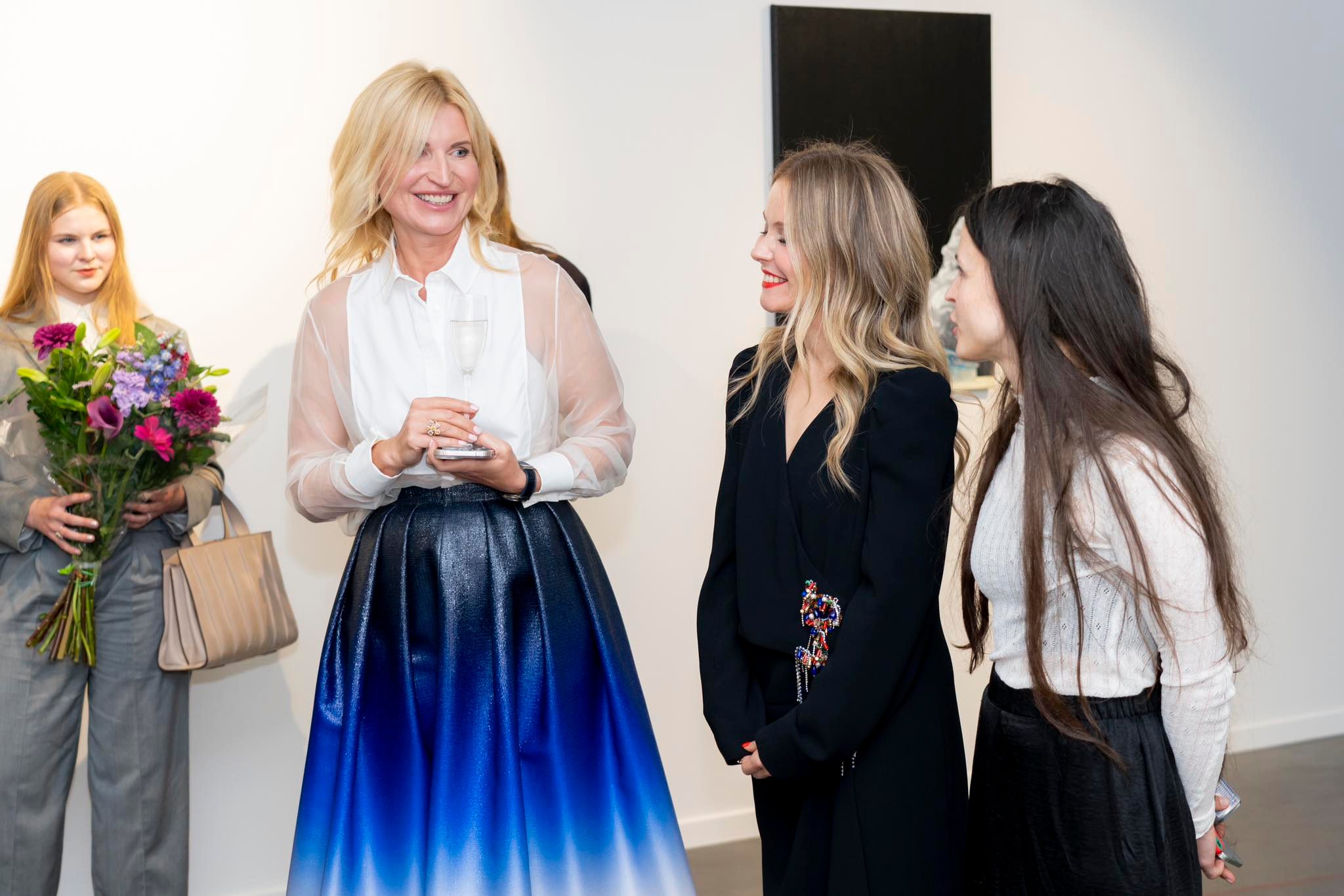NK Gallery in Antwerp, founded by Nadia Kotova in 2012, is going through a phase of renewal and expansion of its artistic programme. After internal transformations, the gallery space has become more flexible and modern, ready to host international projects. The renewed gallery space has become not only an architectural transformation, but also a conceptual renewal – the strict minimalism of the interior emphasises the sharpness and multi-layered nature of the presented projects. After the renovation by Belgian designers and architects, NK Gallery reopened its doors to the public and immediately presented two powerful exhibitions: Cui Bono? by Oli Kreutor and Have You Eaten Caviar Lately? by Alexander Kosolapov. In collaboration with Syntax Gallery (Dubai) and gallery owner Elvira Tarnogradskaya.
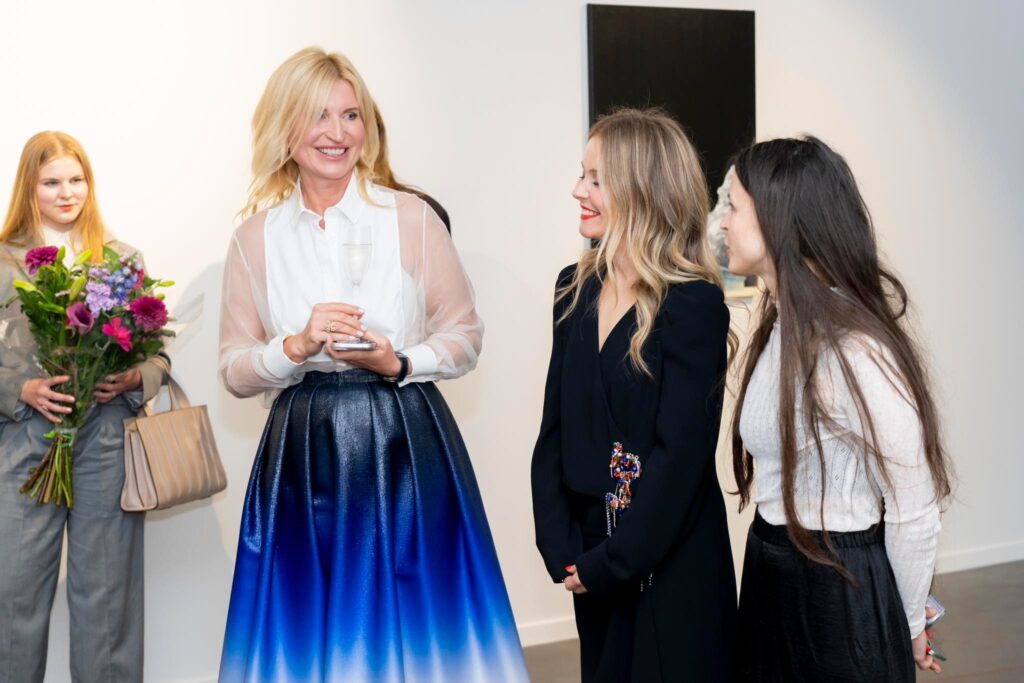
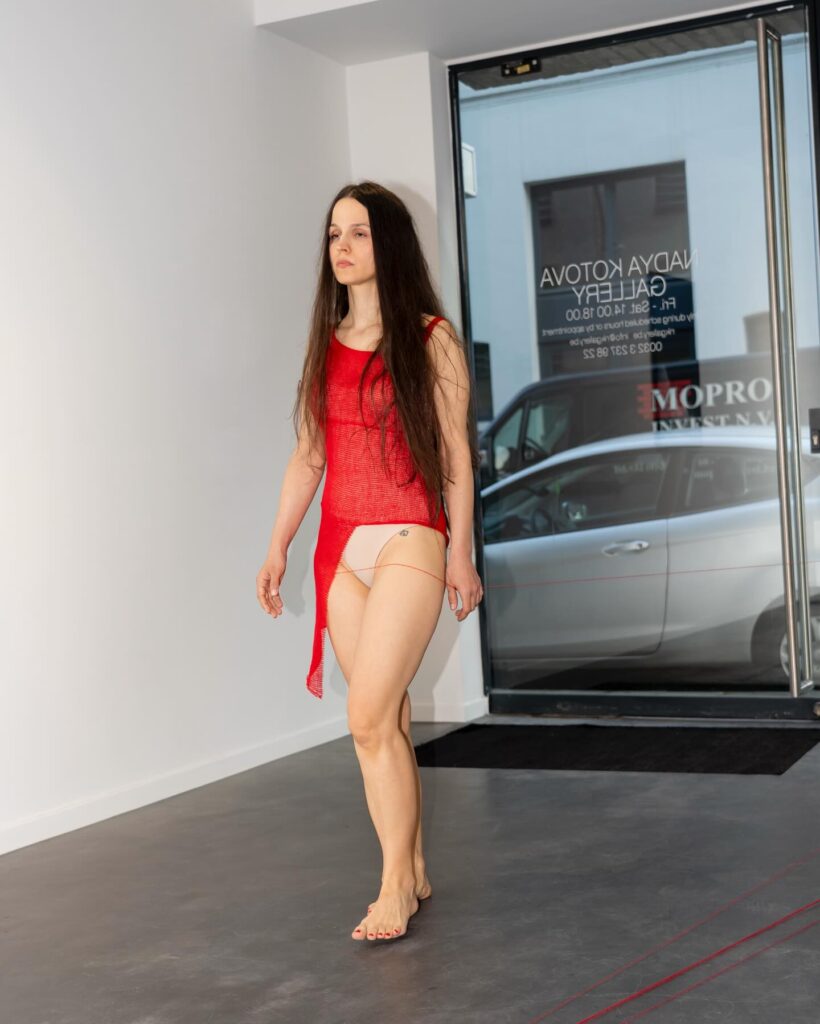
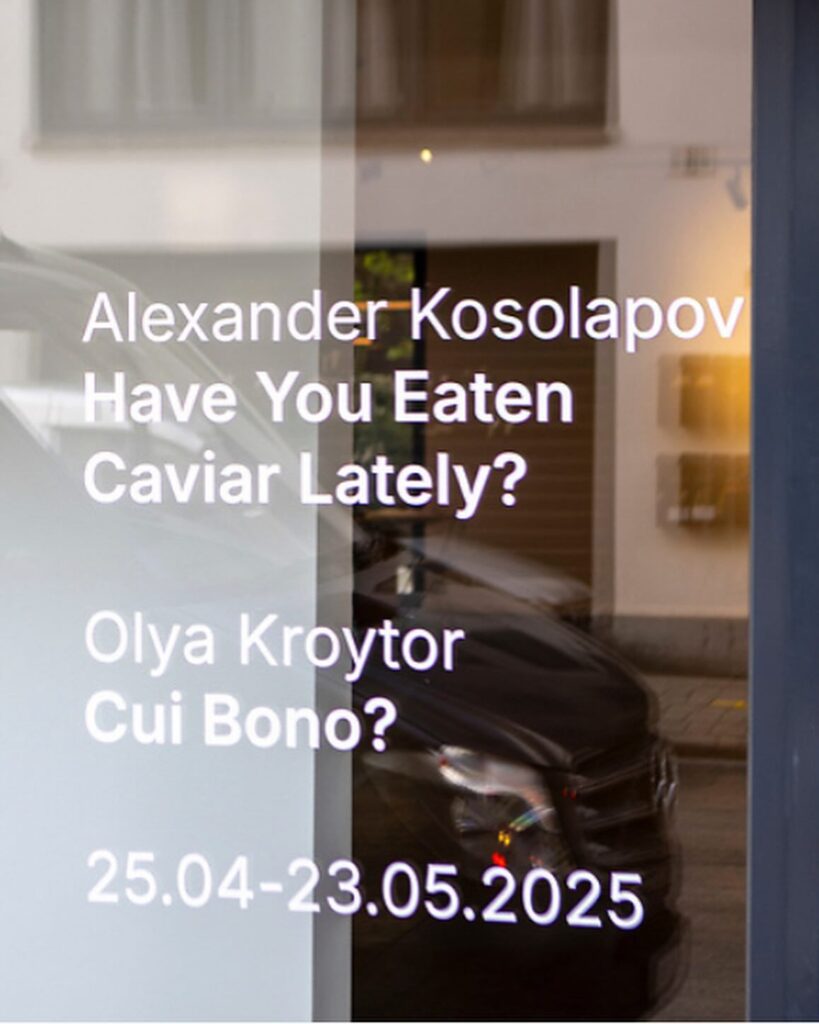
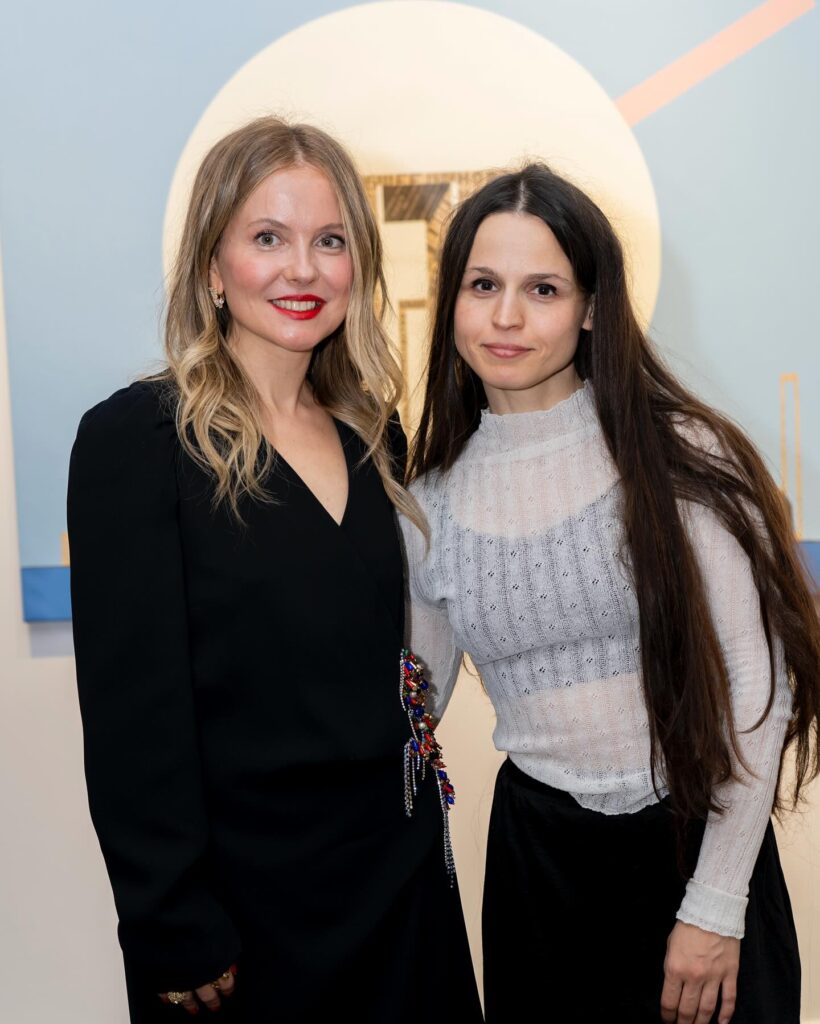
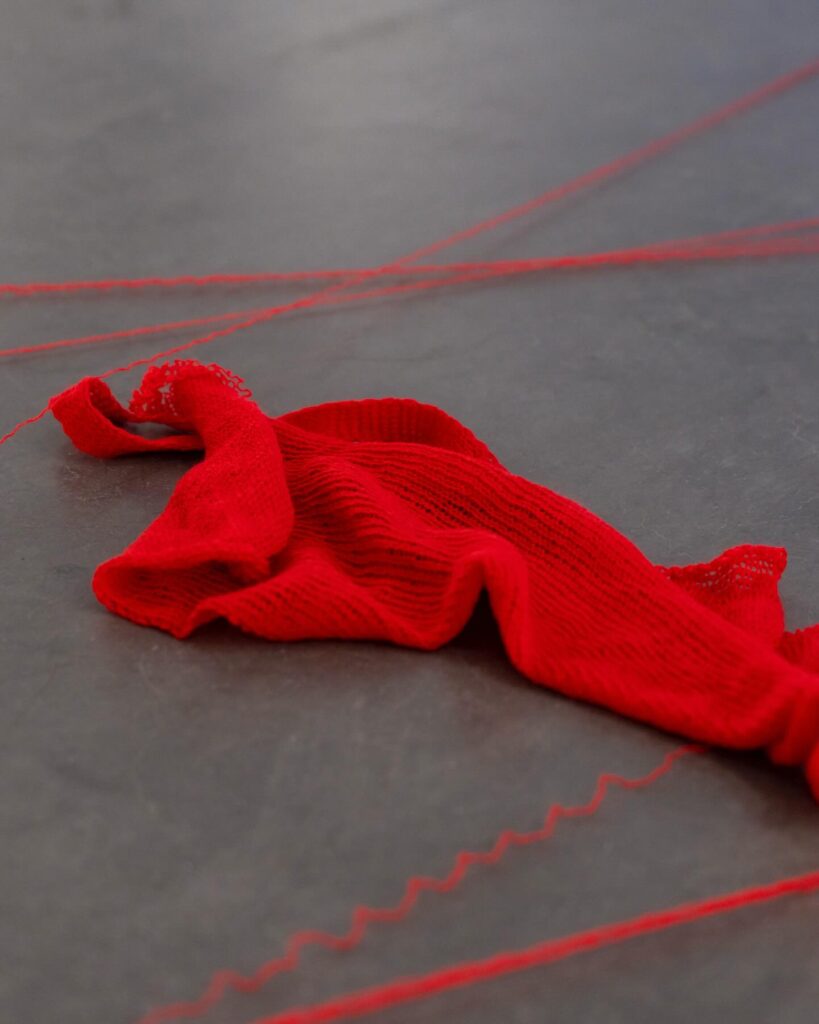
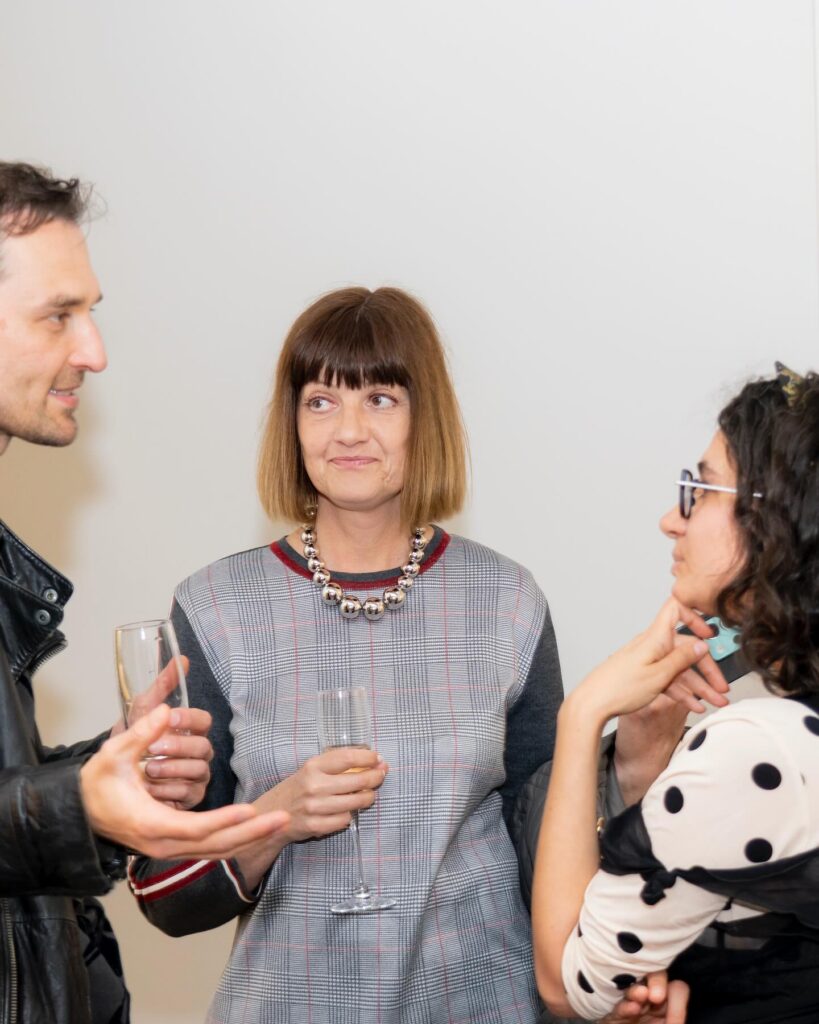
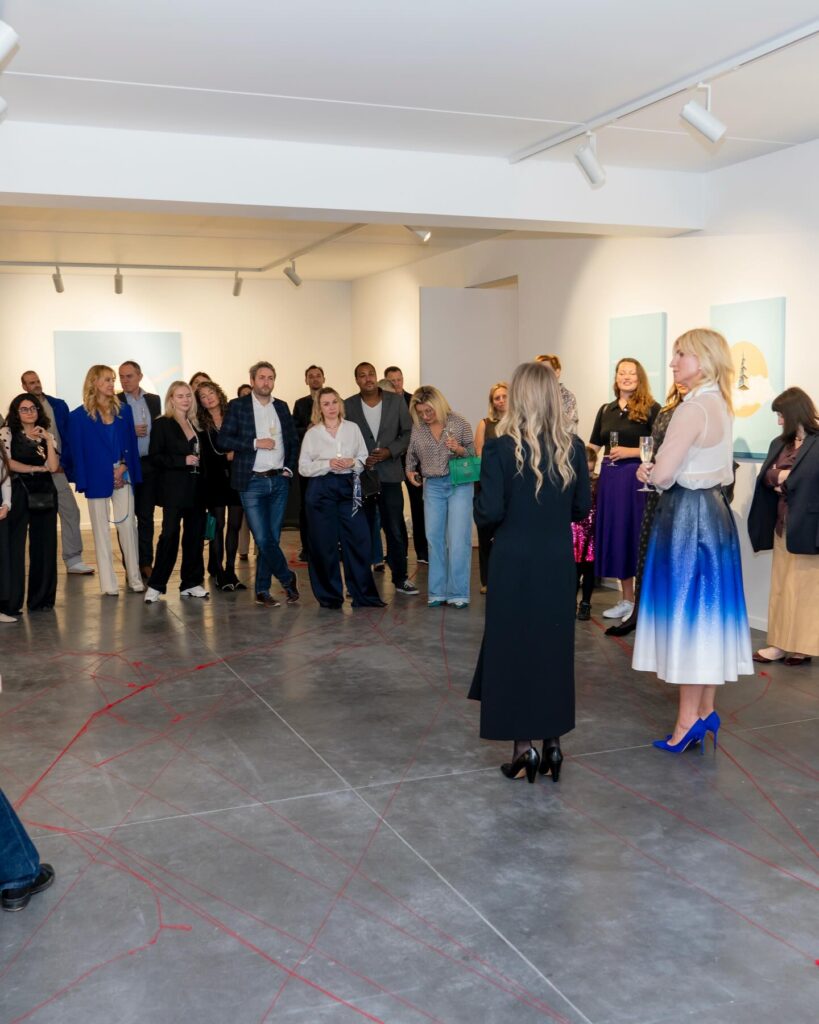
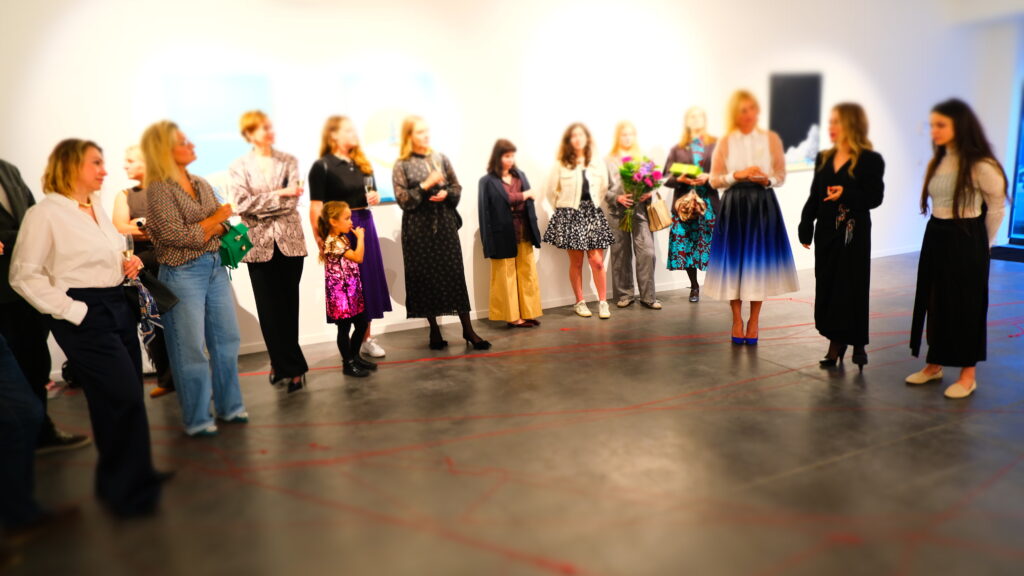
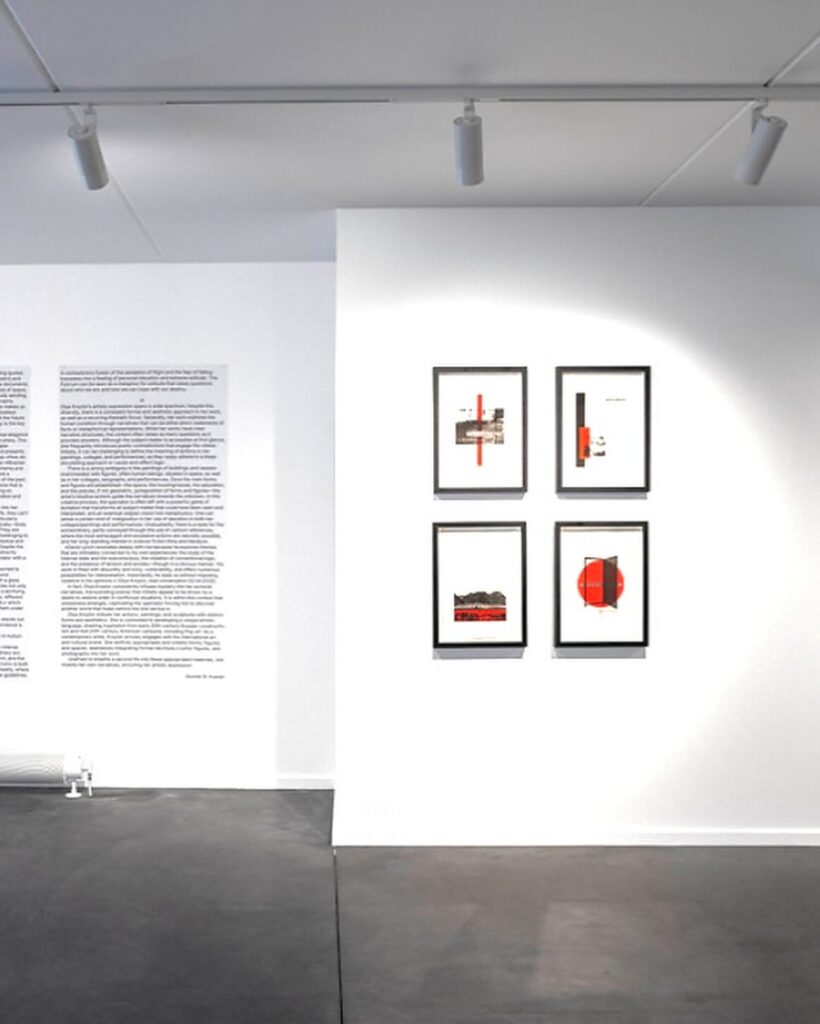
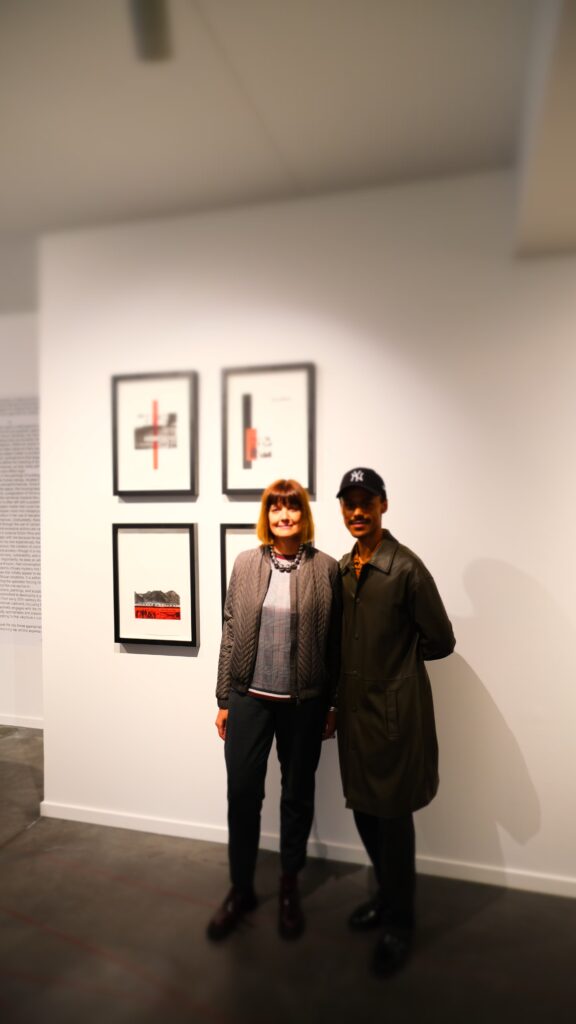
The first thing we saw when we were not late for the performance was Olya unwinding Ariadne’s red thread from which her dress was woven. In the finale, the artist-master of the often dangerous performance on the verge of foul (this is the easiest variant of her work) was wearing nothing but a flesh-coloured bodysuit. The red dress, in the threads of which I personally kept getting tangled while trying to move around the gallery, was unwound down to the last knot. Like our life in the vanity of vanities. The artist has built her performative practices around the dichotomy of creation and decay before. One can’t help but think of Penelope weaving a carpet and unravelling it every night. Ola is very interested in the shade of red, which she works with extensively both in the silkscreen of her collages and in her painting. Her collages stylistically come out of constructivism, and she herself looks something like Varvara Stepanova.
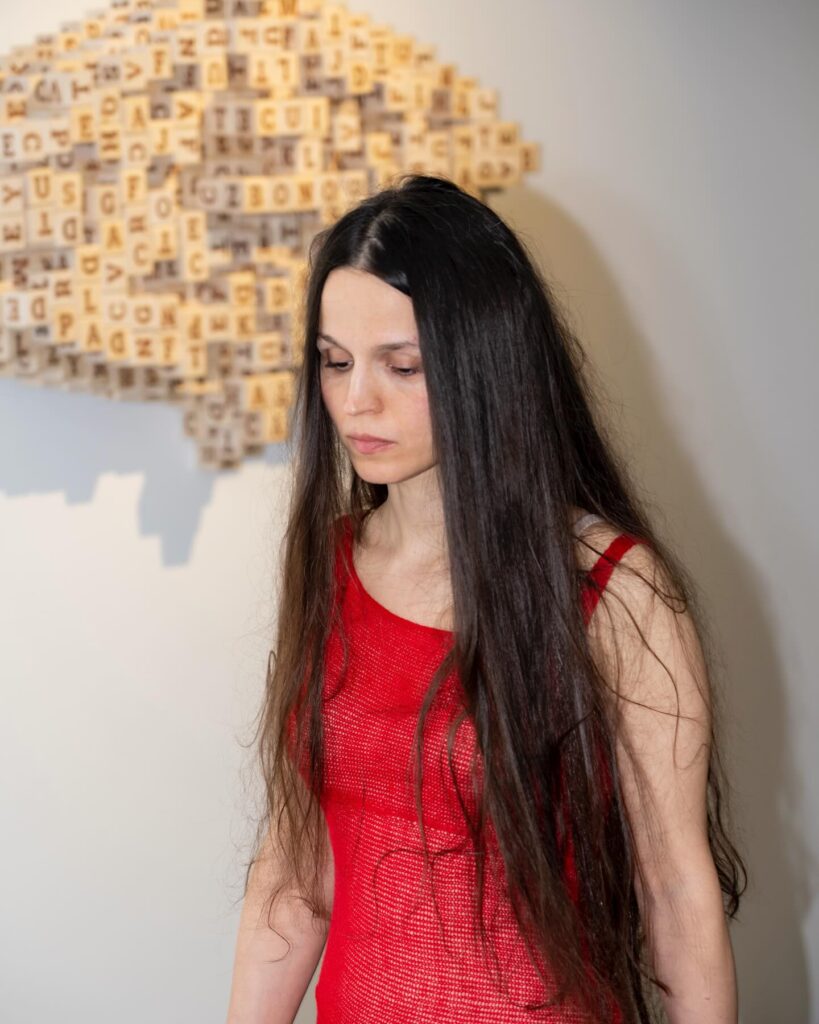

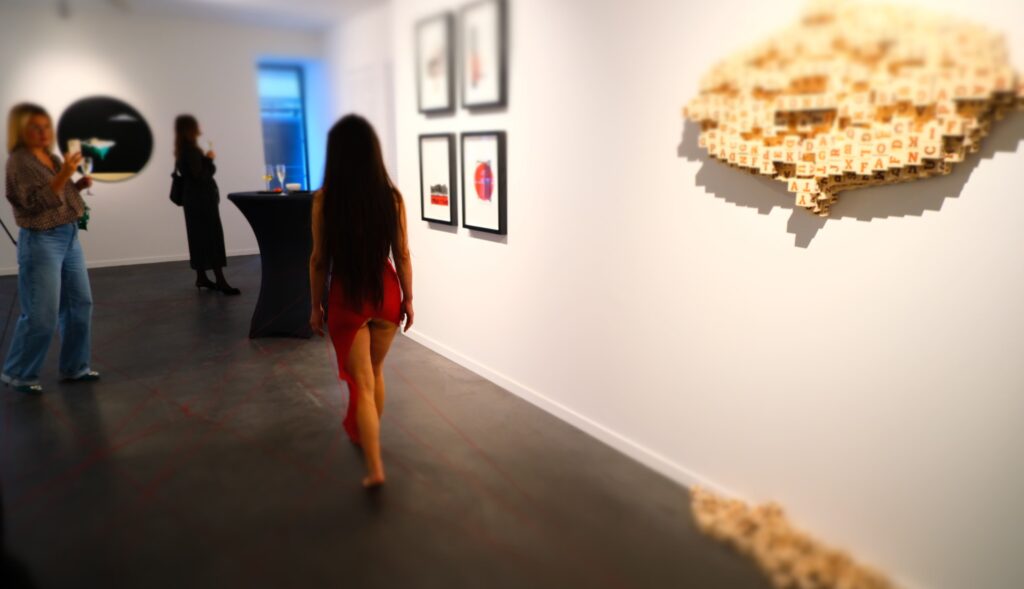
Alexander Kosolapov’s project ‘Have you eaten caviar for a long time’ simply got to the heart of my family saga. My grandfather, the director of a restaurant in a popular seaside resort, used to keep some rudimentary fishing tackle in such jars of black caviar – blades and floats of an avid fisherman. And he ate a lot of caviar from these jars. For me, these flat cans are a symbol of the Soviet bourgeois prosperous life of those close to the trough. I like more democratic red caviar. And I can hardly remember ‘how long ago I ate it’. Alexander Kosolapov’s work is an ironic study of the intersection of Soviet ideology and Western consumerism. The artist’s works are a scattering of recognisable symbols to deconstruct the myths of power and consumer culture.Malevich (1991, Lenin. Coca-Cola (1991), Red Caviar and Blue Caviar (1990-2022) symbolise empty luxury. The exhibition emphasises how symbols of power and consumption remain relevant in the post-Soviet era. The 80-year-old renowned artist’s works can be found in the collections of the Museum of Modern Art in New York and many museums and private collections around the world.
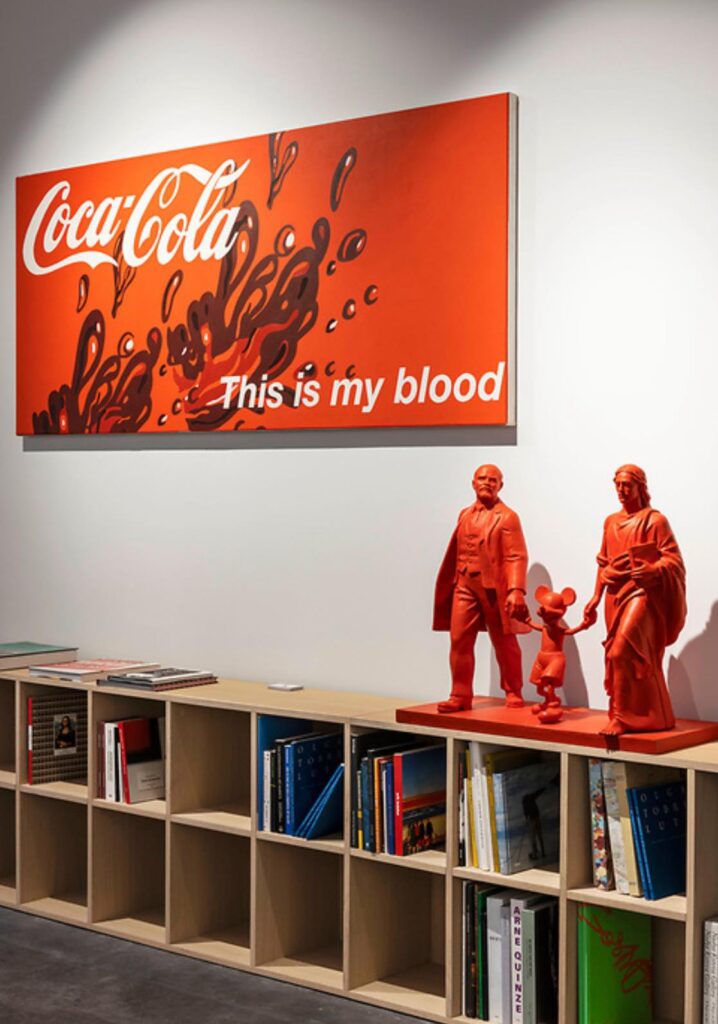
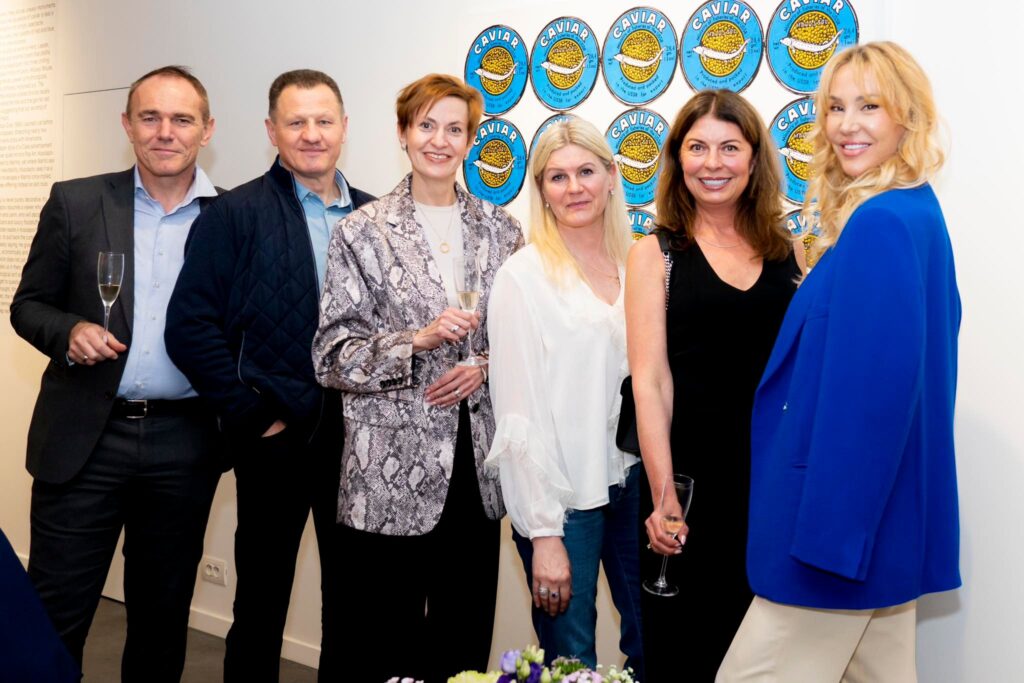
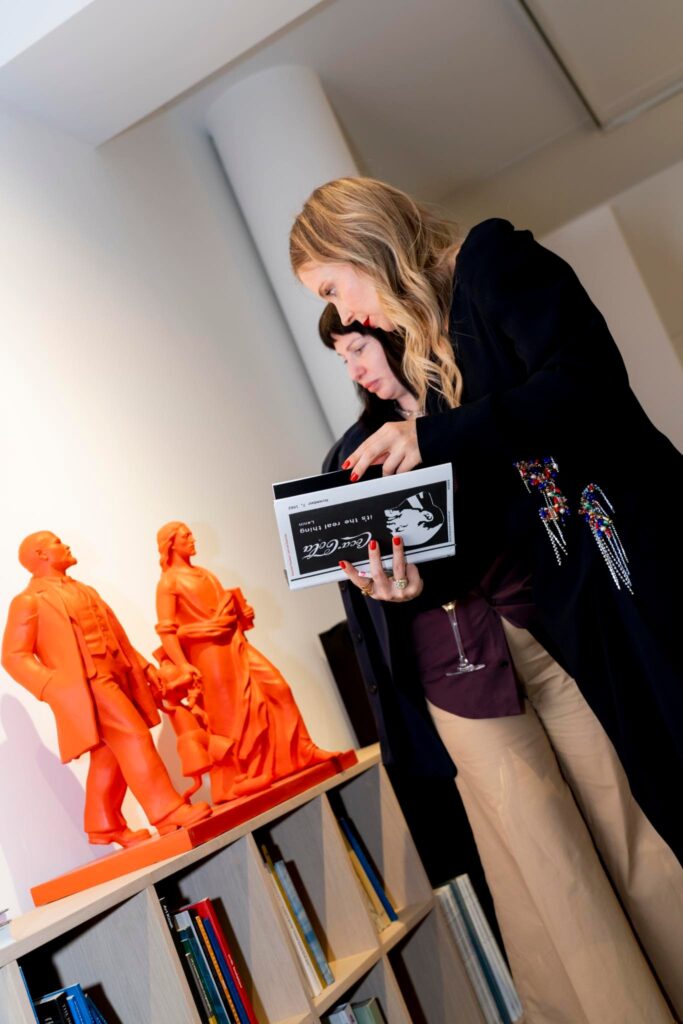
Oli Kreutor’s new series of works, ‘Grandma’s Everything Is Fine’, is a reflection on how modern people perceive reality in the context of constant information noise. The artist retains recognisable forms – cubic objects, collages, minimalist installations – but now they are filled with a sense of decay and overload. Layers, fragments, and layering conceal the person himself – both the author and the viewer. Reality, as Kreuthor shows, keeps slipping away. We only see bits and pieces of it, randomly plucked from the endless stream of news, images and emotions. Even the text in her works ceases to be understandable – familiar expressions lose their meaning. The artist does not give ready-made answers, but invites us to think: is it possible to keep imagination and inner support in a world where everything is rapidly destroying? In her works there is anxiety, subtle irony, and at the same time – quiet support and an attempt to find support in the simplest things.
A fragment of the series that gave it its title:

